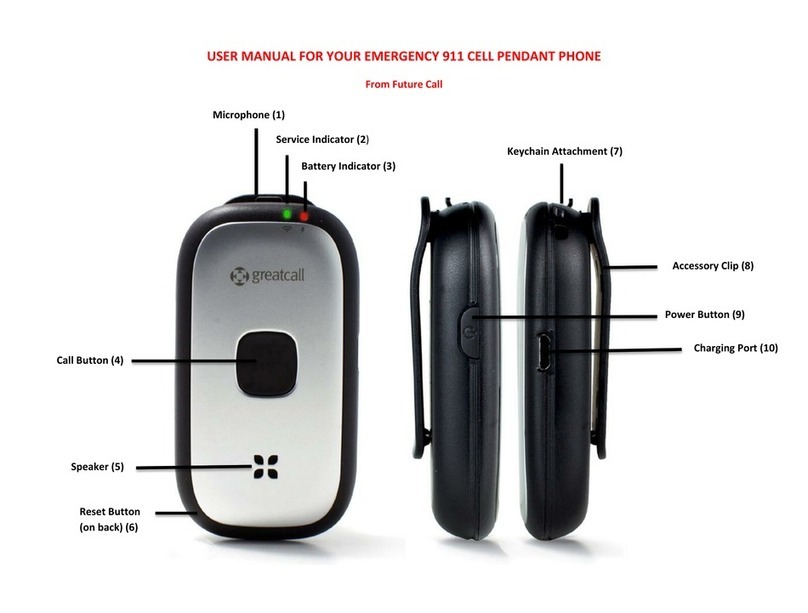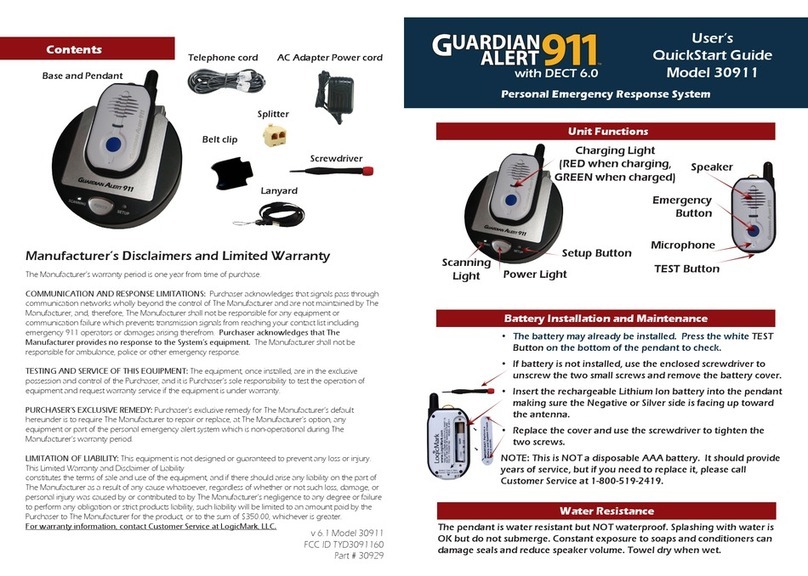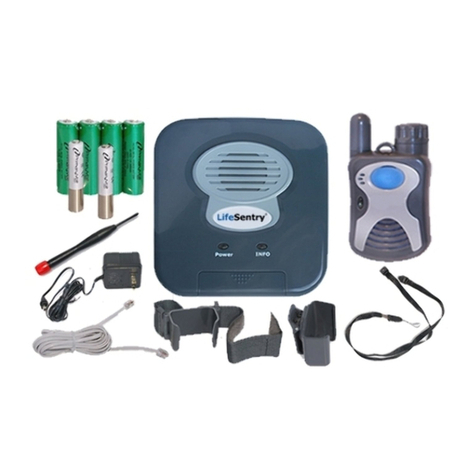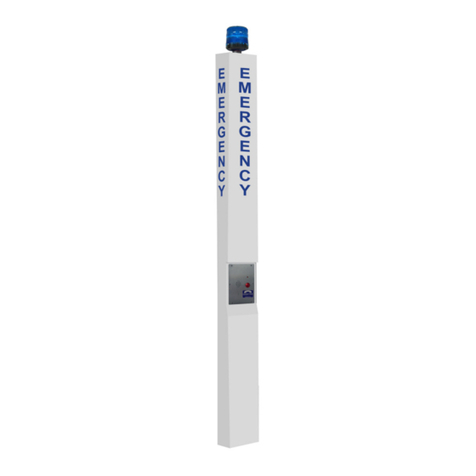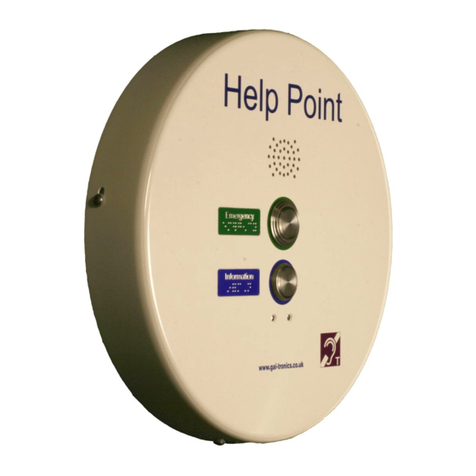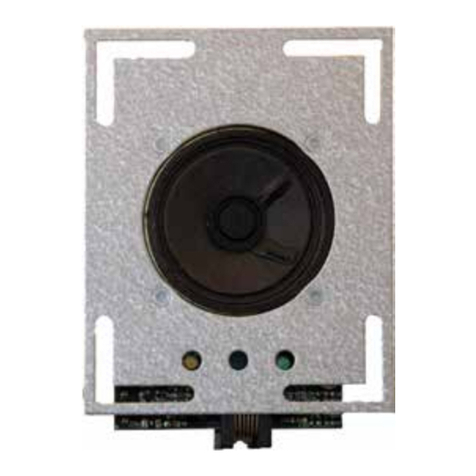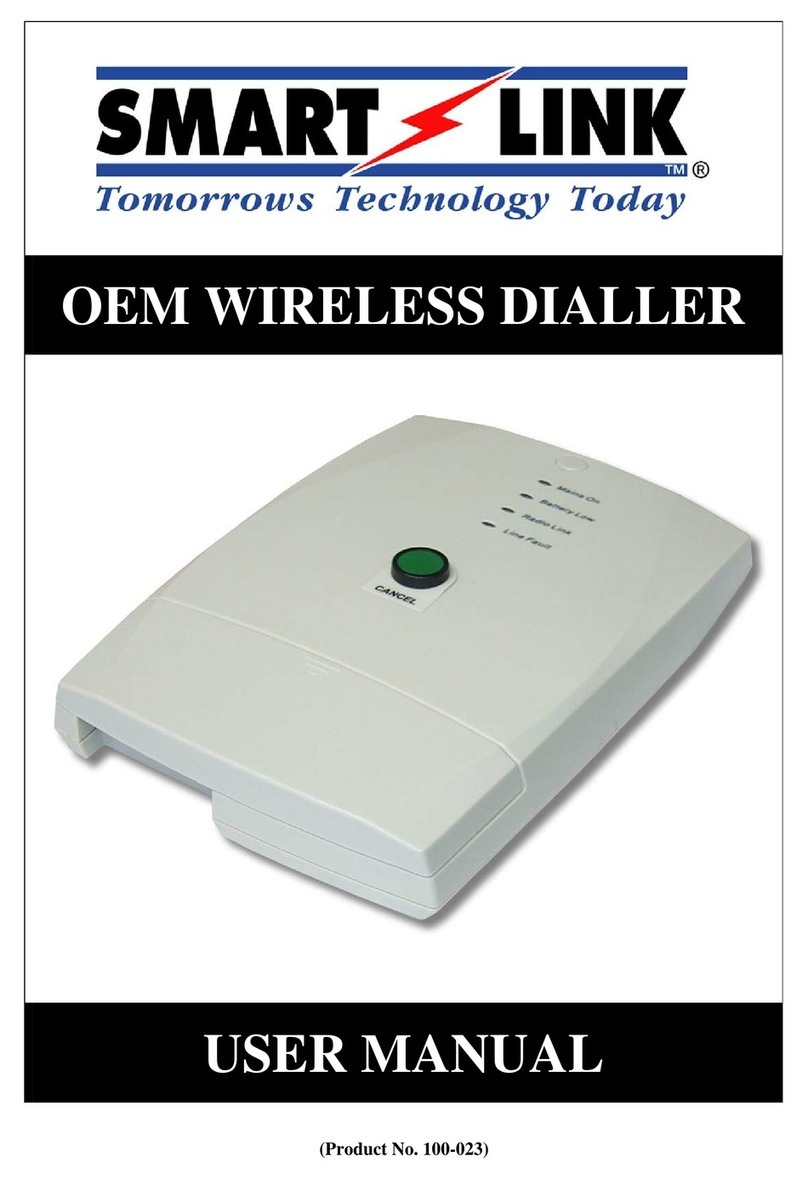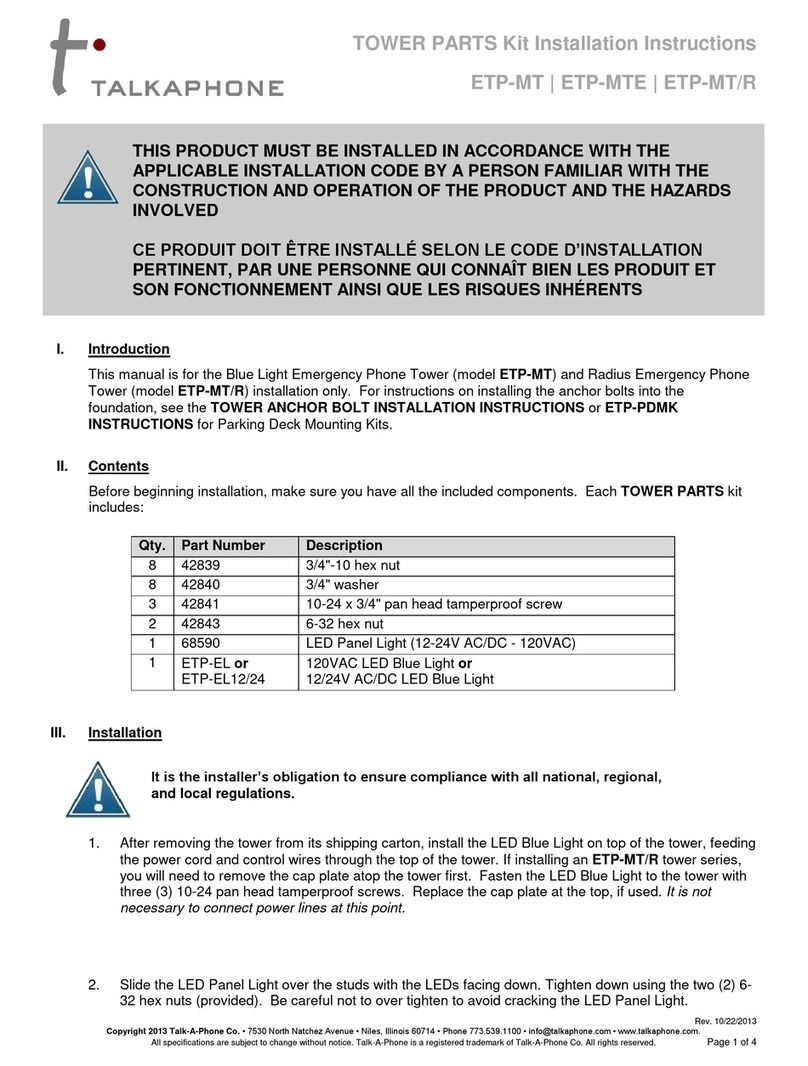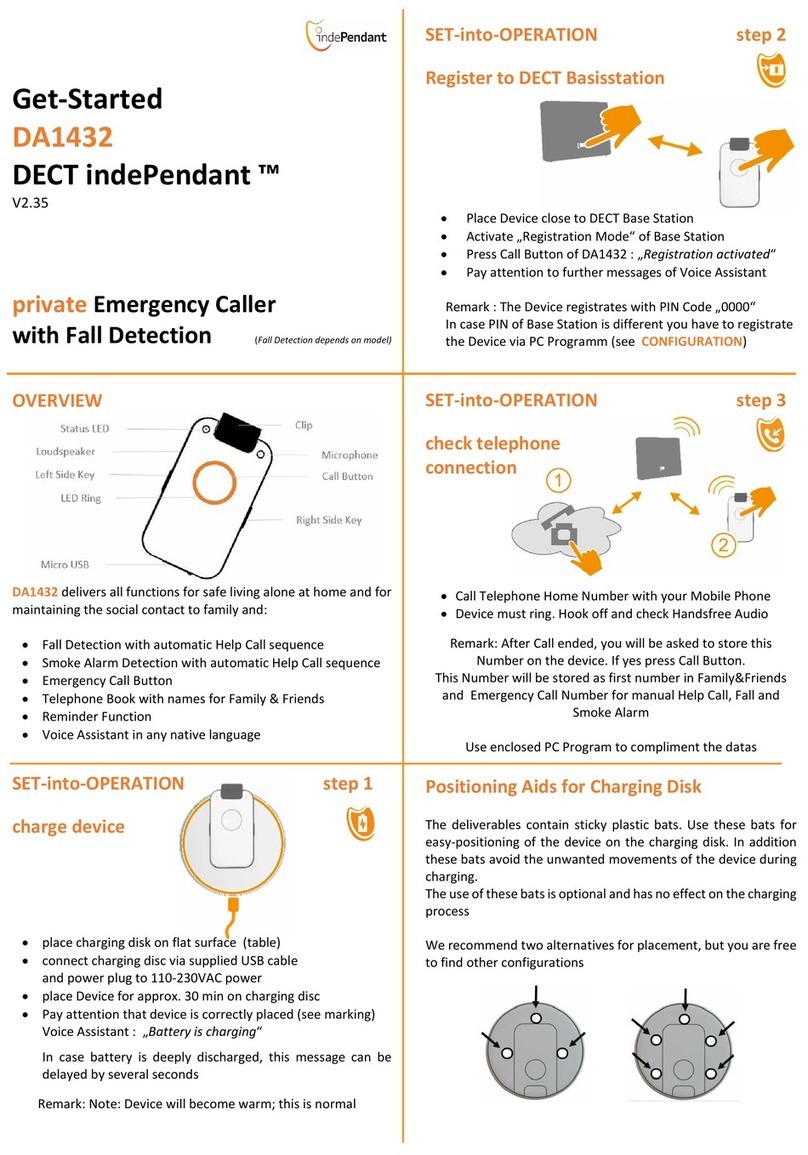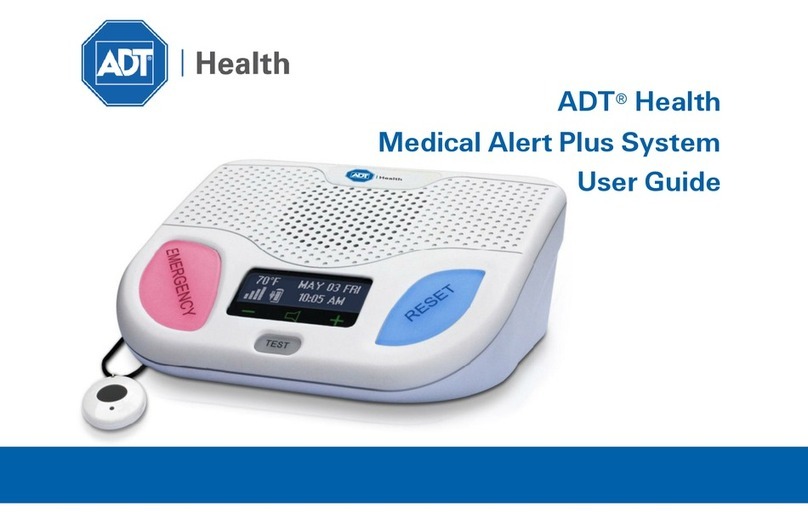Options within the Settings menu
The SETTINGS menu comprises the following options:
LANGUAGE Chooses the language in which the menu prompts are
displayed.
DATE & TIME Sets the date and time details that are used within the
standby screen and the alarm log.
ALARM SEQUENCE This is where the emergency contact details are stored. The
phone numbers listed in this section will be dialled when an
alarm is triggered.
ALARM MESSAGE Allows you to record the voice message that will be played
to the emergency contact when they respond to the call.
REGISTER Allows you to form a bond between the home unit and all
speech pendants and speech pullcords that will be used
with it.
DEREGISTER Allows you to cancel the bond between the home unit and a
speech pendant or speech pullcord.
ALARM VOLUME Allows you to individually set the speaker volume levels
on the home unit, the speech pendant and any speech
pullcords.
PREALARM This sets an optional waiting period that must elapse
between an alarm being triggered and the first emergency
call being placed. This delay provides time to cancel an
alarm if it was triggered accidentally.
PERIODIC CALLS This optional setting allows you to instruct the home unit to
place test calls to a particular monitoring centre at specific
intervals. This allows the home unit’s operation to be
verified.
HARDWIRED I/P Allows you to configure the required response to an
external alarm input (if fitted) into the home unit. Such an
external input could be an intruder alarm or smoke detector.
HARDWIRED O/P Allows you to configure the switching of an external device
(if fitted) when the home unit alarm is triggered. Such an
external output device could be a sounder or flashing
beacon.
FASTDIAL Allows the phone numbers of up to six contacts to be
stored (these are stored separately from the emergency
contact list). These contacts can be quickly selected from
the standby screen when needed.
SET PIN NO Allows you to change the four digit PIN code that is
required to enter the settings menu and to cancel alarms.
RESTORE DEFAULTS Select this option to return the home unit to its factory state.
All stored information/settings will be erased.
